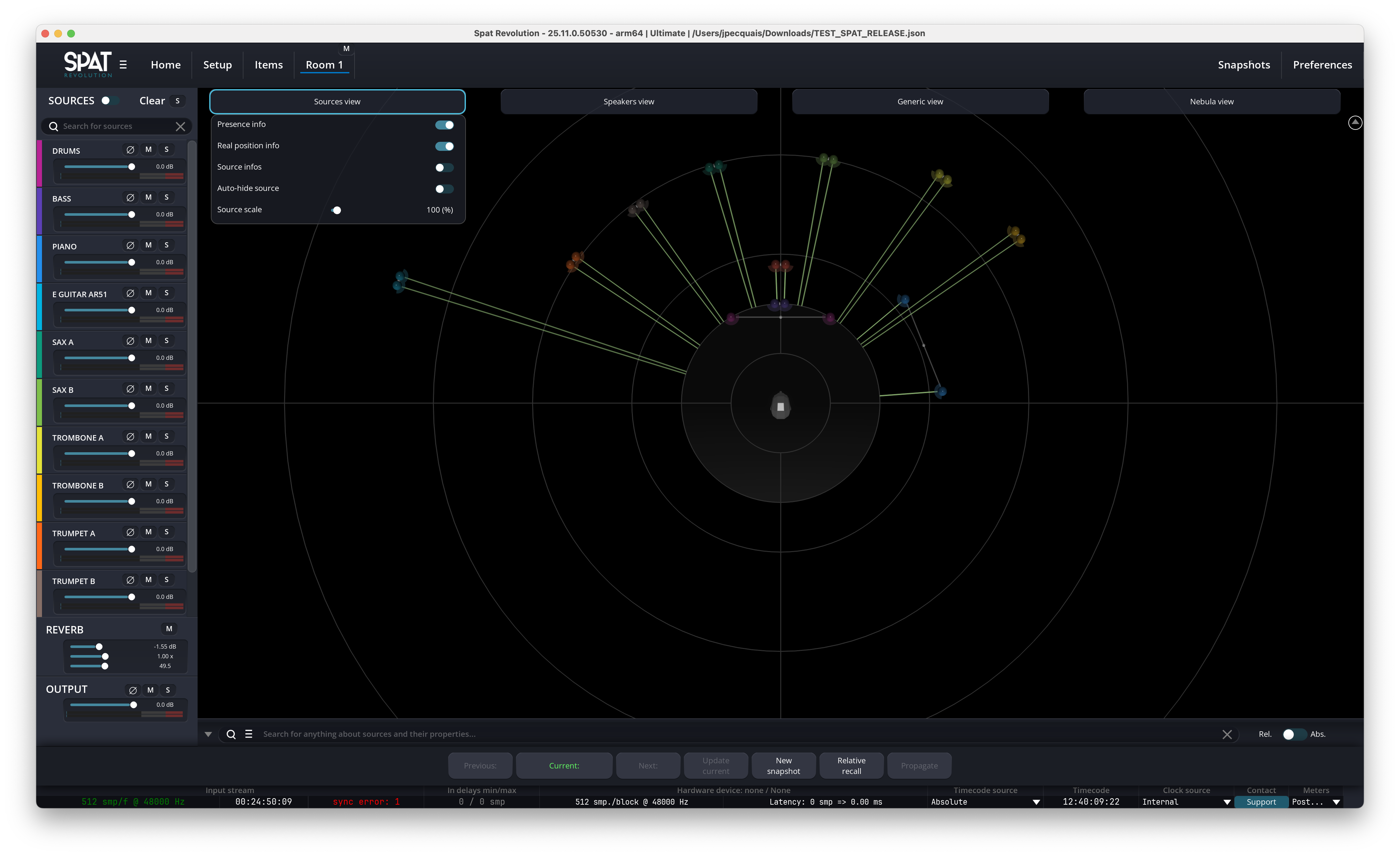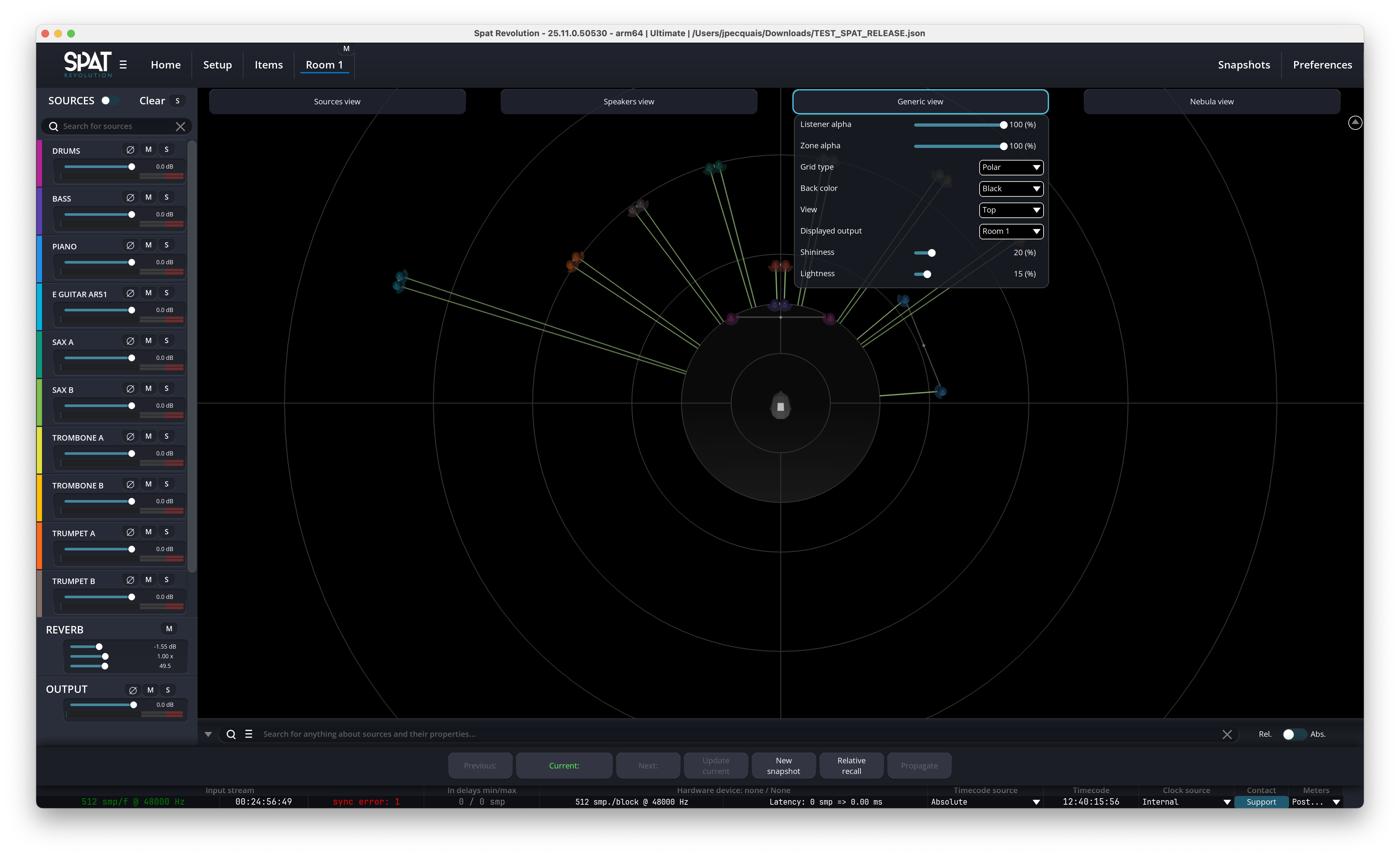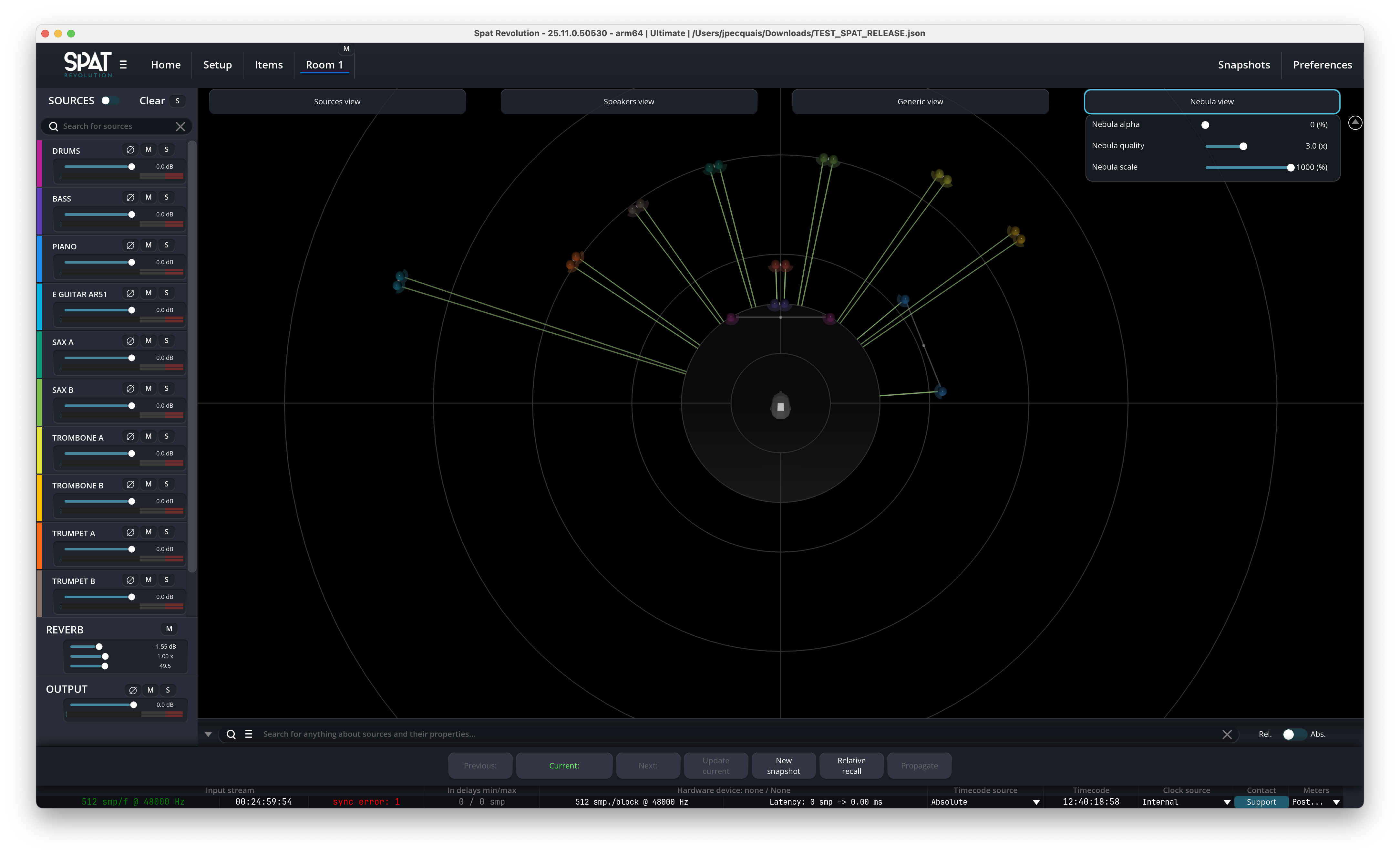Room
In SPAT Revolution, spatialization of virtual sources takes place inside Rooms. To enter a room and open its graphic editor environment, double-click on a room module in the Setup graph or select a room tab from the Navigation bar.
When we enter a Room, we will see the 3D view and all the connected sources. Options related to the 3D view display are located in the top menu. On the left side panel of the room editor, you get a list representation of each source. We can click on an empty part of the source lane, and the Source Parameters editor for that virtual source will appear.
Mutes, solos, and phase inversions are manageable for all sources and for the entire room output from this index list. A solo clear button is available at the top of the source list. Clicking on it will reset all the solo of all rooms.
Two particular items labeled as REVERB and OUTPUT appear fixed at the bottom of the left panel. By clicking on these, we then enter into two more parameter editors: one relating to the Artificial Reverberation and one relating to the room output configuration and Listener Position editor.
When you have more than one room in your project, then the SOURCES switch at the top left of a Room editor can be handy, as it will show all sources from all Rooms in the same editor - allowing edition, mix, solo and mute management of all sources from one Room view.
Room Graphic Engine
Along with the audio modeling engine, one of SPAT’s key features is its ability to model a high-definition graphical representation of the virtual space inside each room. We can intuitively interact and move sources and “camera view” directly with our mouse. Move a source by grabbing its “emitter” object, or in the case of a grouped source, grab any one of the emitters that belong to the group. Alternatively, sources can be positioned by manipulating their coordinate-related source parameter controls.
Source manipulation from the 3D view:
- One click to select.
- Drag to move them.
The camera angle can also be manipulated:
- The mouse wheel controls the zoom factor.
cmd/ctrl+dragwill rotate the scene.shift+dragwill move the scene.
A split-screen Top-Front view is also available in the top bar menu. See the corresponding section below.
Selecting a source also displays its name over its 3D representation. At the top of the room, there is an option to display the names of all the sources or all the speakers.
Room output parameters
Output list
This panel lists all the speakers used in the room (when set to channel-based). It allows quick access to the speaker arrangement editor and the compute function. Each output has a test button that sends the signal from the signal generator directly to the routed speaker. The signal generator type and level are set in the Application preferences.
Listener
This panel gives access to the listening point. We can change its position using the X, Y, Z parameters, and its rotations using Yaw, Pitch, Roll.
Protection Zone
This panel controls the behavior and size of the protection zone. By default, it is set to a diameter of four meters. Please check out the section named Understanding the mixing zones if you want more information about the protection zone. Note that the protection zone is attached to the listener position.
- Source fit speakers elevation
- Source over listener head
- Width
Efficiency Zone
This panel contains options related to the efficiency zone.
- Clamping behavior option (consult the Understanding the mixing zones section for more information)
- Depth - change the depth of the efficiency zone
- Trunc (available only for non-surrounding 2D speakers’ setup) - change the starting distance of the efficiency zone
Scaling
Distance
This parameter scales all the distance automation (OSC, plugins data, and snapshots) by a manual factor. This factor is adapted automatically when editing the arrangement of the room.
Tracking
This parameter changes the scale of RTTrPM protocol data.
Background Image
This panel allows you to import a background image in SPAT Revolution and to position it in the 3D view.
Make sure to have no special character in the path or file name.











